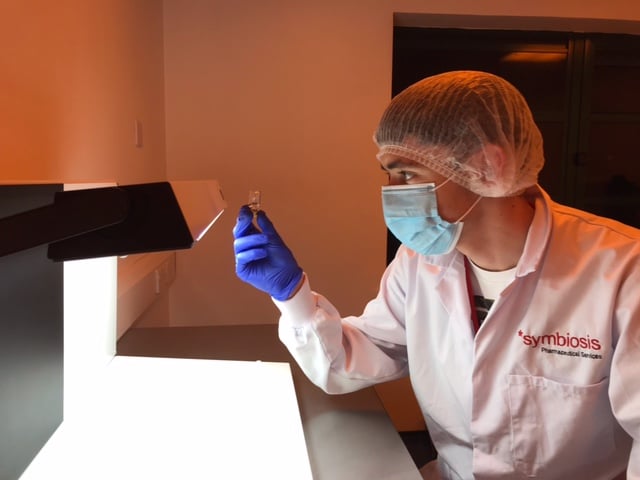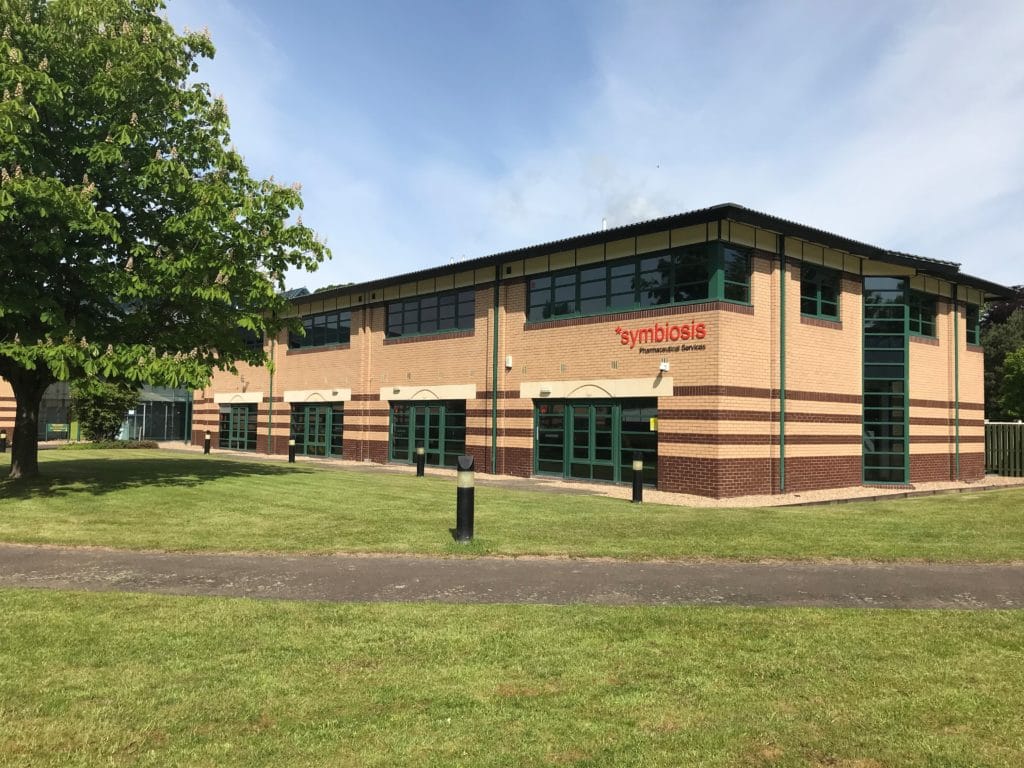About Symbiosis
Symbiosis is an industry-leading pharmaceutical Contract Manufacturing Organisation (CMO) based in Stirling, Scotland, specialising in the sterile fill/finish of vials of injectable bio/pharmaceutical. The company was established in 2011 in response to the increasing global demand for niche, sterile manufacturing specialists that could satisfy the need for supply of product for clinical trials. The team at Symbiosis have recently manufactured clinical trial supplies of the Oxford-AstraZeneca Covid-19 vaccine.
Symbiosis first recruited apprentices through the Advanced Therapies Apprenticeship Community (ATAC) in 2019. Their apprentices have been a mix of talented new recruits to the company alongside existing staff who were given the opportunity to upskill through this programme. All apprentices are currently studying towards the Modern Apprenticeship (MA) in Life Sciences through Forth Valley College.
The impact of apprenticeships on the organisation
The opportunity to recruit and upskill staff through the MA in Life Sciences has brought about positive improvement for Symbiosis. John Downs, Training Manager at Symbiosis, explained that:
“Our apprentices can be very direct when giving us constructive feedback. This has prompted us to make changes to our operating processes after considering their feedback, as well as being able to shape their training experience. We have tried different approaches to supporting our apprentices, from rotation across different departments on a 6-monthly basis to keeping them in one place for longer. At the beginning we were a little uncertain about how to support them, but this has now changed significantly, having put in place clear training processes and support. Operational managers are now regularly wanting to be next on the list to support apprentices in their teams. This has been a real cultural change for us.”
Being part of the ATAC programme has enabled hiring managers and the company to fully benefit from the apprentices, making them a much sought-after resource within the company.
The outcome: apprentices have become an integral part of recruitment plan
Symbiosis’ workforce plans now include the recruitment of apprentices each year and they intend to recruit at least another two this year. Providing people with an alternative route to gain a qualification and hands-on practical experience addresses the need for talent to enable the growth of the company whilst also being a significant strategy in bridging the skills gap within the sector.
John continued to explain:
“You do need some level of structure and support in place – this is the same as when recruiting someone through normal routes. It is important to ensure you have an induction plan ready, training in place for SOPs for safe practice, and you will then quickly see the benefits afterwards. It is great seeing young people grow into their role and grow their confidence. It makes a real difference to the apprentices’ life and grants them a real, genuine, opportunity to get ahead.”
ATAC has been the structured guide for Symbiosis, providing independent support. Apprentices and managers used ATAC as a resource to ask questions and take away the bureaucracy in identifying suitable training providers and enrolling the apprentices onto the programme.
Colin MacKay, CEO at Symbiosis, explained in the recent The Sunday Times article about the benefits of apprentices
“Building a workforce with the right skills is crucial, both for Scotland’s benefit and for Symbiosis. Taking on apprentices is undeniably worthwhile and it’s mutually beneficial.”
Developing skills and employability for the future
ATAC has prioritised a range of programmes, from entry-level to Master’s-equivalent apprenticeships, to bring in new talent and upskill staff for the rapidly growing UK cell and gene therapy industry. The number of ATAC apprentices more than doubled in one year, now standing at 136 apprentices employed across 36 UK companies, and the initiative continues to provide a platform for developing industry innovators of the future.

